To northern sky watchers, Vega is a familiar sight in the summer sky. It’s one of the brightest stars in the sky and in 2013, astronomers detected a large ring of rocky debris surrounding the planet. The prospect of planets suddenly became a real possibility so astronomers turned the James Webb Space Telescope (JWST) on the star. The hunt achieved 10 times the sensitivity of previous ground based searches but alas no planets were discovered.
Continue reading “Webb Scans Vega for Planets”A New Deep Learning Algorithm Can Find Earth 2.0

How can machine learning help astronomers find Earth-like exoplanets? This is what a recently accepted study to Astronomy & Astrophysics hopes to address as a team of international researchers investigated how a novel neural network-based algorithm could be used to detect Earth-like exoplanets using data from the radial velocity (RV) detection method. This study holds the potential to help astronomers develop more efficient methods in detecting Earth-like exoplanets, which are traditionally difficult to identify within RV data due to intense stellar activity from the host star.
Continue reading “A New Deep Learning Algorithm Can Find Earth 2.0”Exoplanets: Why study them? What are the challenges? What can they teach us about finding life beyond Earth?
Universe Today has explored the importance of studying impact craters and planetary surfaces and what these scientific disciplines can teach us about finding life beyond Earth. We learned that impact craters are caused by massive rocks that can either create or destroy life, and planetary surfaces can help us better understand the geologic processes on other worlds, including the conditions necessary for life. Here, we will venture far beyond the confines of our solar system to the many stars that populate our Milky Way Galaxy and the worlds they orbit them, also known as exoplanets. We will discuss why astronomers study exoplanets, challenges of studying exoplanets, what exoplanets can teach us about finding life beyond Earth, and how upcoming students can pursue studying exoplanets, as well. So, why is it so important to study exoplanets?
Continue reading “Exoplanets: Why study them? What are the challenges? What can they teach us about finding life beyond Earth?”This Jupiter-Sized Exoplanet is Unusual for Several Reasons
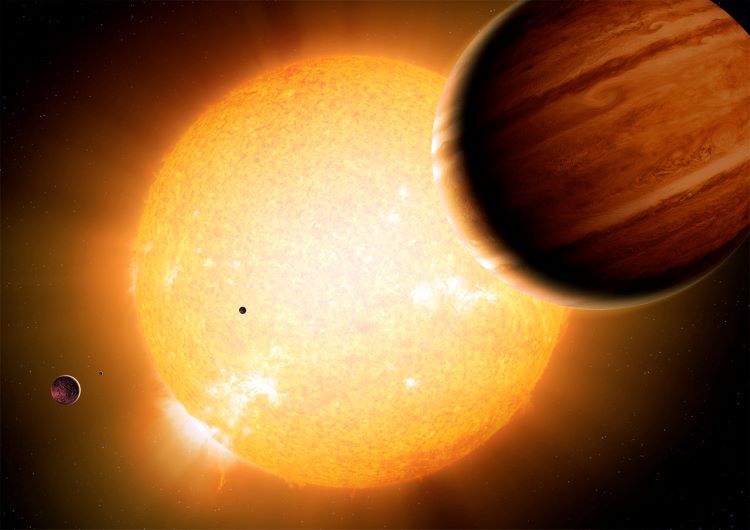
In a recent study published in the Monthly Notices of the Royal Astronomical Society, a team of international researchers examined exoplanet TOI-4860 b, which is located approximately 80 parsecs (261 light-years) from Earth and has an orbital period of approximately 1.52 days around a low-mass star, or a star smaller than our Sun. Exoplanets orbiting so close to their parent stars aren’t uncommon and commonly known as “hot Jupiters”.
However, TOI-4860 b is unique due its relative size compared to its parent star, along with its lower surface temperatures compared to “hot Jupiters” and possessing large amounts of heavy elements. These attributes are why researchers are classifying TOI-4680 b as a “warm Jupiter”, and could challenge traditional planetary systems formation models while offering new insights into such processes, as well.
Continue reading “This Jupiter-Sized Exoplanet is Unusual for Several Reasons”A Direct Image of a Planet That’s Just Like Jupiter, Only Younger
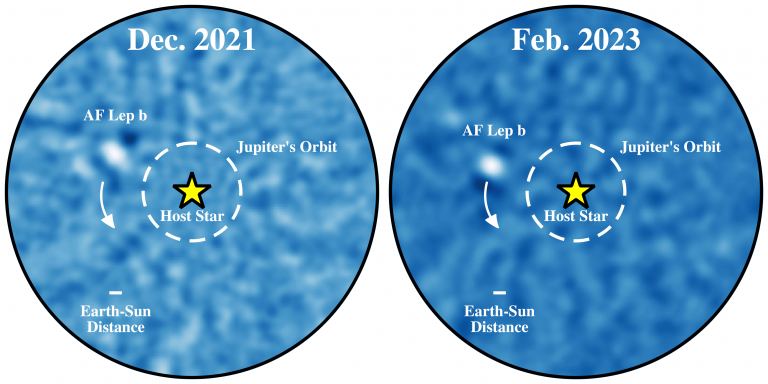
In a recent study published in The Astrophysical Journal Letters, a team of astronomers used the W. M. Keck Observatory on Maunakea, Hawai?i Island to identify exoplanet, AF Lep b, which is three times the mass of Jupiter orbiting a Sun-sized star located approximately 87.5 light-years from Earth. What makes this discovery unique is AF Lep b is the first exoplanet discovered using a method called astrometry, which involves measuring unexpected, miniscule changes in the position of a star relative to nearby stars, which could indicate another object, an exoplanet, is causing gravitational tugs on its parent star.
Continue reading “A Direct Image of a Planet That’s Just Like Jupiter, Only Younger”The Planet That Shouldn’t Exist

As of this writing, almost 5300 exoplanets spanning approximately 4000 planetary systems have been confirmed to exist in our universe. With each new exoplanet discovery, scientists continue to learn more about planetary formation and evolution that has already shaken our understanding of this process down to its very core. One such example is “Hot Jupiters”, which are Jupiter-sized exoplanets, or larger, that orbit closer to their parents stars than Mercury does to our own. This is in stark contrast to our own Solar System, which has rocky planets closer towards our Sun and the gas giant planets much farther out.
Continue reading “The Planet That Shouldn’t Exist”The Closeby Habitable Exoplanet Survey (CHES) Could Detect Exoplanets Within a few Dozen Light-Years of Earth Using Astrometry
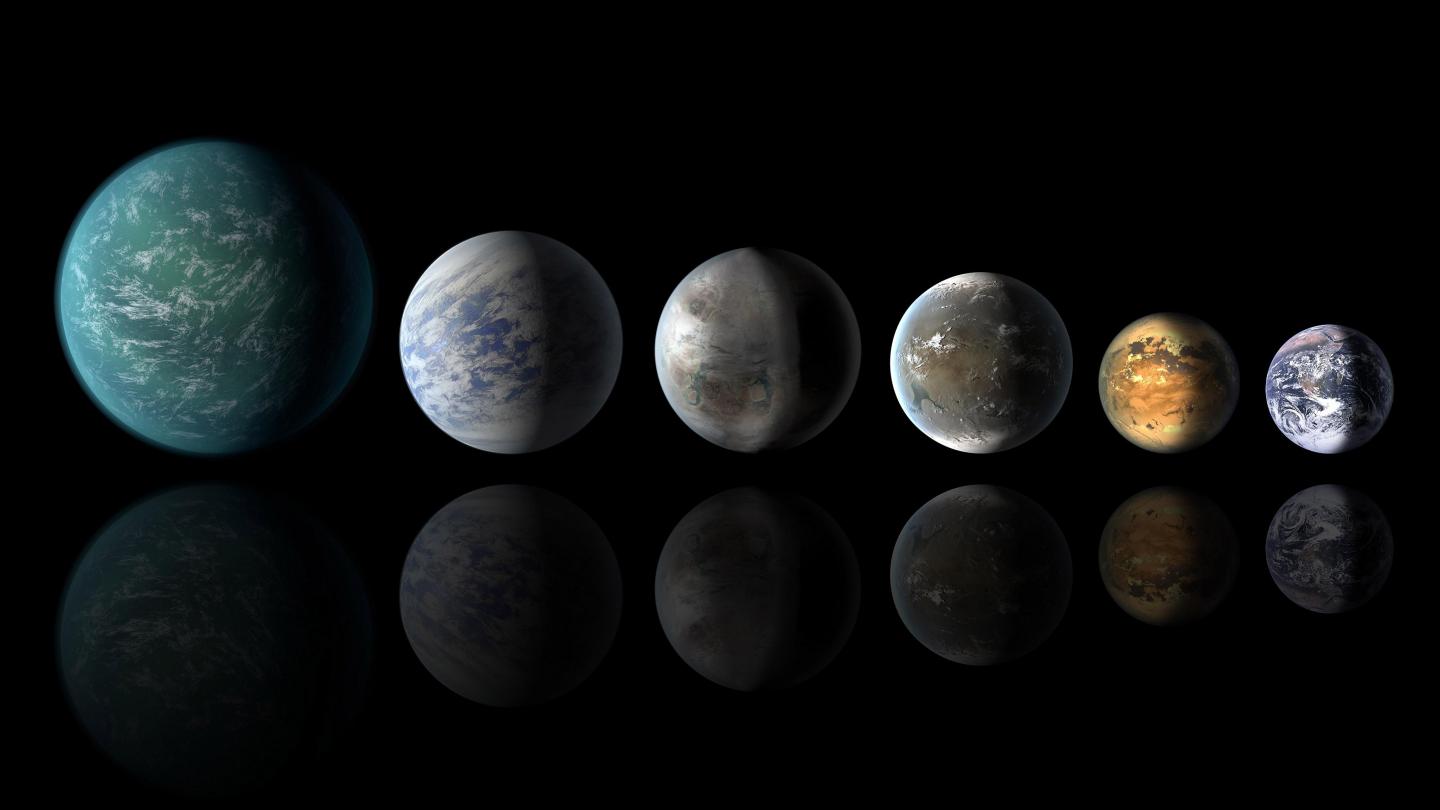
As of this article’s writing, NASA has indicated that 5,030 extrasolar planets have been confirmed in 3,772 systems, with another 8,974 candidates awaiting confirmation. With next-generation instruments like the James Webb Space Telescope (JWST) coming online, the number and diversity of confirmed exoplanets are expected to grow exponentially. In particular, astronomers anticipate that the number of known terrestrial planets and Super-Earths will drastically increase.
In the coming years, the opportunities for exoplanet studies will increase considerably as thousands more are discovered using various methods. In a recent study, a team led by the Chinese Academy of Sciences (CAS) described a new space-telescope concept known as the Closeby Habitable Exoplanet Survey (CHES). This proposed observatory will search for Earth-like planets in the habitable zones (HZs) of Sun-like stars within approximately 33 light-years (10 parsecs) using a method known as micro-arcsecond relative astrometry.
Continue reading “The Closeby Habitable Exoplanet Survey (CHES) Could Detect Exoplanets Within a few Dozen Light-Years of Earth Using Astrometry”TESS Finds its Third Planet, a sub-Neptune with a 36-Day Orbit

After only three months of operation, NASA’s TESS (Transiting Exoplanet Survey Satellite) spacecraft is delivering on its mission to find more exoplanets. A new paper presents the latest finding: a sub-Neptune planet with a 36-day orbit around its star. This is the third confirmed exoplanet that TESS has found.
The planet orbits a K-dwarf star about 52 light years away, in the constellation Reticulum. In astronomical terms, this makes the planet pretty close to us, and a great candidate for follow-up observations. Even better, it may have a sibling planet about the same size as Earth.
Continue reading “TESS Finds its Third Planet, a sub-Neptune with a 36-Day Orbit”What is the Gravitational Microlensing Method?
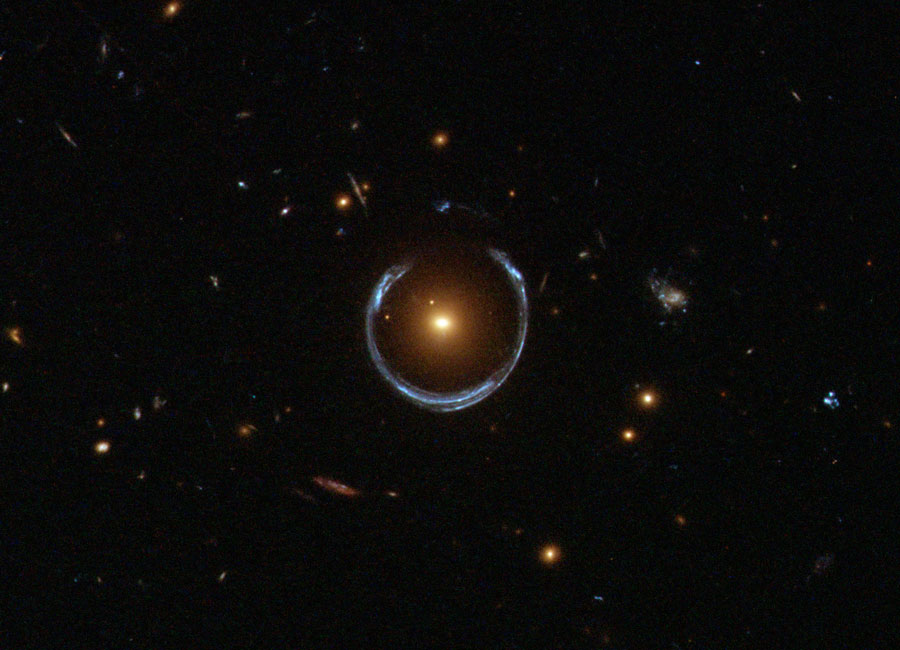
Welcome back to our series on Exoplanet-Hunting methods! Today, we look at the curious and unique method known as Gravitational Microlensing.
The hunt for extra-solar planets sure has heated up in the past decade. Thanks to improvements made in technology and methodology, the number of exoplanets that have been observed (as of December 1st, 2017) has reached 3,710 planets in 2,780 star systems, with 621 system boasting multiple planets. Unfortunately, due to various limits astronomers are forced to contend with, the vast majority have been discovered using indirect methods.
One of the more commonly-used methods for indirectly detecting exoplanets is known as Gravitational Microlensing. Essentially, this method relies on the gravitational force of distant objects to bend and focus light coming from a star. As a planet passes in front of the star relative to the observer (i.e. makes a transit), the light dips measurably, which can then be used to determine the presence of a planet.
In this respect, Gravitational Microlensing is a scaled-down version of Gravitational Lensing, where an intervening object (like a galaxy cluster) is used to focus light coming from a galaxy or other object located beyond it. It also incorporates a key element of the highly-effective Transit Method, where stars are monitored for dips in brightness to indicate the presence of an exoplanet.
Description:
In accordance with Einstein’s Theory of General Relativity, gravity causes the fabric of spacetime to bend. This effect can cause light affected by an object’s gravity to become distorted or bent. It can also act as a lens, causing light to become more focused and making distant objects (like stars) appear brighter to an observer. This effect occurs only when the two stars are almost exactly aligned relative to the observer (i.e. one positioned in front of the other).
These “lensing events” are brief, but plentiful, as Earth and stars in our galaxy are always moving relative to each other. In the past decade, over one thousand such events have been observed, and typically lasted for a few days or weeks at a time. In fact, this effect was used by Sir Arthur Eddington in 1919 to provide the first empirical evidence for General Relativity.
This took place during the solar eclipse of May 29th, 1919, where Eddington and a scientific expedition traveled to the island of Principe off the coast of West Africa to take pictures of the stars that were now visible in the region around the Sun. The pictures confirmed Einstein’s prediction by showing how light from these stars was shifted slightly in response to the Sun’s gravitational field.
The technique was originally proposed by astronomers Shude Mao and Bohdan Paczynski in 1991 as a means of looking for binary companions to stars. Their proposal was refined by Andy Gould and Abraham Loeb in 1992 as a method of detecting exoplanets. This method is most effective when looking for planets towards the center of the galaxy, as the galactic bulge provides a large number of background stars.
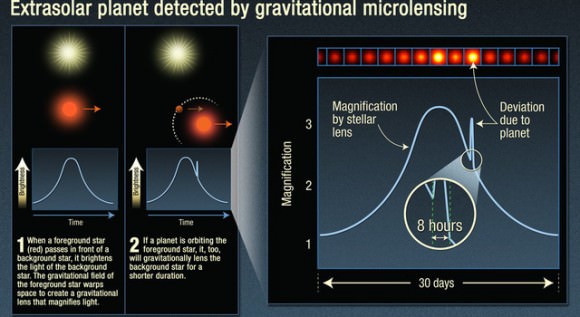
Advantages:
Microlensing is the only known method capable of discovering planets at truly great distances from the Earth and is capable of finding the smallest of exoplanets. Whereas the Radial Velocity Method is effective when looking for planets up to 100 light years from Earth and Transit Photometry can detect planets hundreds of light-years away, microlensing can find planets that are thousands of light-years away.
While most other methods have a detection bias towards smaller planets, the microlensing method is the most sensitive means of detecting planets that are around 1-10 astronomical units (AU) away from Sun-like stars. Microlensing is also the only proven means of detecting low-mass planets in wider orbits, where both the transit method and radial velocity are ineffective.
Taken together, these benefits make microlensing the most effective method for finding Earth-like planets around Sun-like stars. In addition, microlensing surveys can be effectively mounted using ground-based facilities. Like Transit Photometry, the Microlensing Method benefits from the fact that it can be used to survey tens of thousands of stars simultaneously.
Disadvantages:
Because microlensing events are unique and not subject to repeat, any planets detected using this method will not be observable again. In addition, those planets that are detected tend to be very far way, which makes follow-up investigations virtually impossible. Luckily, microlensing detections generally do not require follow-up surveys since they have a very high signal-to-noise ratio.
While confirmation is not necessary, some planetary microlensing events have been confirmed. The planetary signal for event OGLE-2005-BLG-169 was confirmed by HST and Keck observations (Bennett et al. 2015; Batista et al. 2015). In addition, microlensing surveys can only produce rough estimations of a planet’s distance, leaving significant margins for error.
Microlensing is also unable to yield accurate estimates of a planet’s orbital properties, since the only orbital characteristic that can be directly determined with this method is the planet’s current semi-major axis. As such, planet’s with an eccentric orbit will only be detectable for a tiny portion of its orbit (when it is far away from its star).
Finally, microlensing is dependent on rare and random events – the passage of one star precisely in front of another, as seen from Earth – which makes detections both rare and unpredictable.
Examples of Gravitational Microlensing Surveys:
Surveys that rely on the Microlensing Method include the Optical Gravitational Lensing Experiment (OGLE) at the University of Warsaw. Led by Andrzej Udalski, the director of the University’s Astronomical Observatory, this international project uses the 1.3 meter “Warsaw” telescope at Las Campanas, Chile, to search for microlensing events in a field of 100 stars around the galactic bulge.
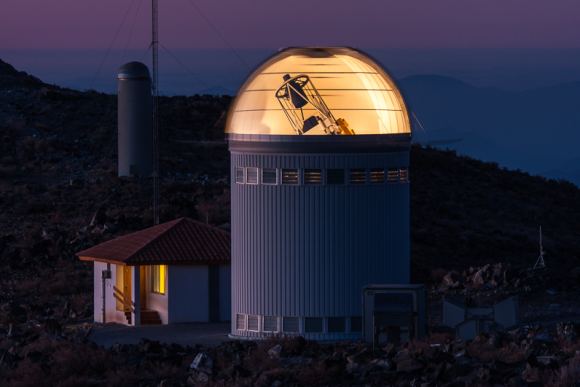
There is also the Microlensing Observations in Astrophysics (MOA) group, a collaborative effort between researchers in New Zealand and Japan. Led by Professor Yasushi Muraki of Nagoya University, this group uses the Microlensing Method to conduct surveys for dark matter, extra-solar planets, and stellar atmospheres from the southern hemisphere.
And then there’s the Probing Lensing Anomalies NETwork (PLANET), which consists of five 1-meter telescopes distributed around the southern hemisphere. In collaboration with RoboNet, this project is able to provide near-continuous observations for microlensing events caused by planets with masses as low as Earth’s.
The most sensitive survey to date is the Korean Microlensing Telescope Network (KMTNet), a project initiated by the Korea Astronomy and Space Science Institute (KASI) in 2009. KMTNet relies on the instruments at three southern observatories to provide 24-hour continuous monitoring of the Galactic bulge, searching for microlensing events that will point the way towards earth-mass planets orbiting with their stars habitable zones.
We have written many interesting articles on exoplanet detection here at Universe Today. Here is What are Extra Solar Planets?, What is the Transit Method?, What is the Radial Velocity Method?, What is Gravitational Lensing? and Kepler’s Universe: More Planets in our Galaxy than Stars
For more information, be sure to check out NASA’s page on Exoplanet Exploration, the Planetary Society’s page on Extrasolar Planets, and the NASA/Caltech Exoplanet Archive.
Astronomy Cast also has relevant episodes on the subject. Here’s Episode 208: The Spitzer Space Telescope, Episode 337: Photometry, Episode 364: The CoRoT Mission, and Episode 367: Spitzer Does Exoplanets.
Sources:
Discovery! More Planets Found Orbiting In A Star Cluster
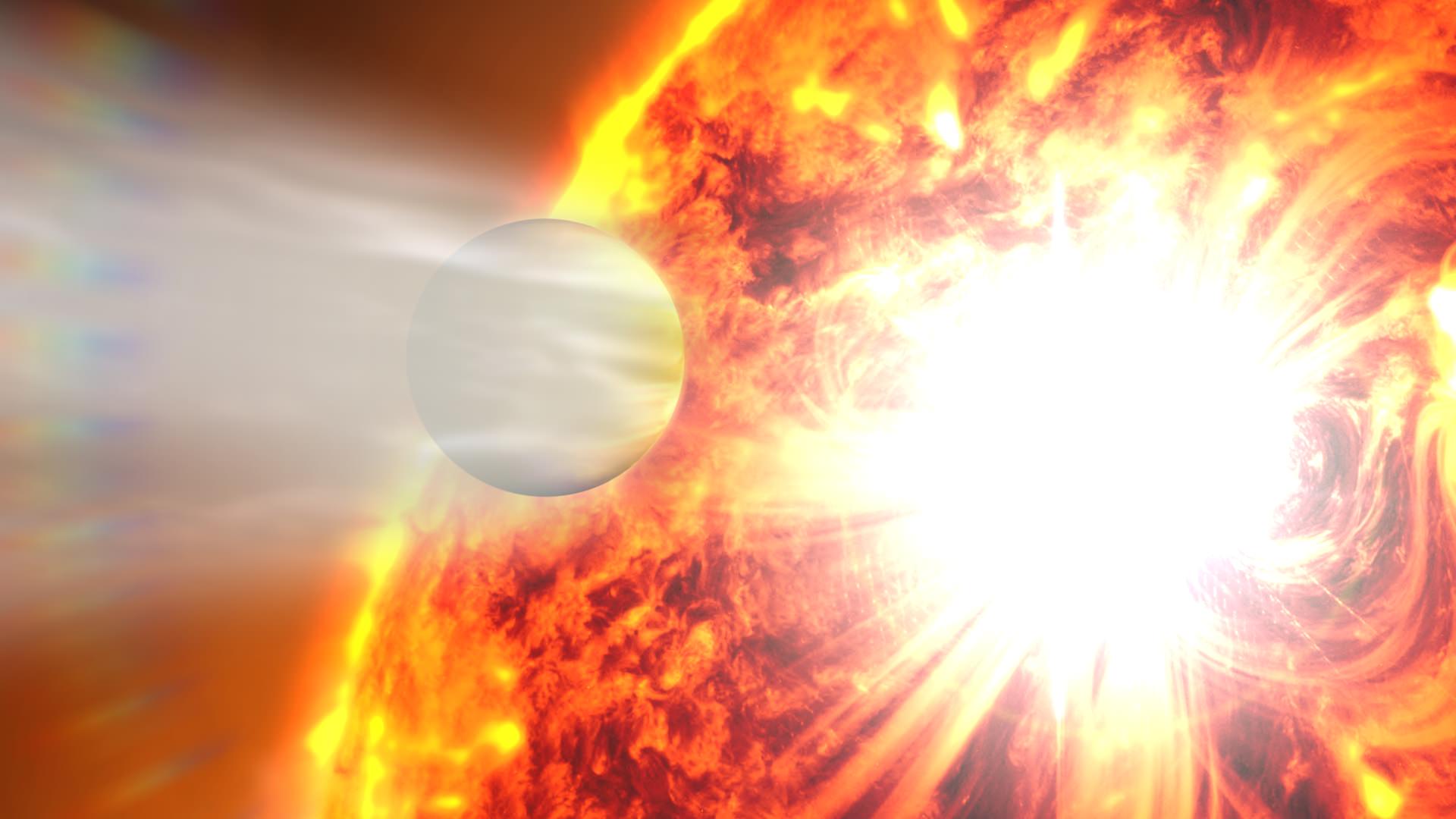
As Earthlings, we’re so used to thinking about planets being in simple orbits around a single star. But the Sun likely didn’t begin its life alone. It formed as part of a cluster of stars, all feeding from the same well of gas.
Could star clusters also host planets? Or do they have to wait for the little guys until the stars evolve and move further apart? Well, astronomers have actually just found planets — yes, two planets — orbiting Sun-like stars in a cluster 3,000 light-years from Earth.
These are the third and fourth star cluster planets yet discovered, but the first found “transiting” or passing across the face of their stars as seen from Earth. (The others were found through detecting gravitational wobbles in the star.)
This is no small feat for a planet to survive. In a telescope, a star cluster might look pretty benign, but up close it’s pretty darn harsh. A press release about the discovery used a lot of words like “strong radiation”, “harsh stellar winds” and “stripping planet-forming materials” in a description of what NGC 6811 would feel like.
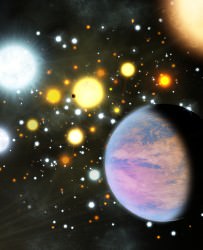
“Old clusters represent a stellar environment much different than the birthplace of the Sun and other planet-hosting field stars,” stated lead author Soren Meibom of the Harvard-Smithsonian Center for Astrophysics.
“We thought maybe planets couldn’t easily form and survive in the stressful environments of dense clusters, in part because for a long time we couldn’t find them.”
The find, as you would expect, comes from the prolific planet-hunting NASA Kepler spacecraft that is now battling problems with pointing in the right direction. Although the telescope is in the penalty box, there still are reams of data waiting to be analyzed and released.
The planets are known as Kepler-66b and Kepler-67b, and are both approaching the size of Neptune (which is four times the size of Earth). Their parent cluster, NGC 6811, is one billion years old. Astronomers are still puzzled as to how these little worlds survived for so long.
“Highly energetic phenomena including explosions, outflows and winds often associated with massive stars would have been common in the young cluster,” stated the journal paper in Nature.
“The degree to which the formation and evolution of planets is influenced by a such a dense and dynamically and radiatively hostile environment is not well understood, either observationally or theoretically.”
Check out the entire study in the latest edition of Nature.


